You have no items in your shopping cart.
Tang Qiaoling Mausoleum
Introducing Qiaoling Mausoleum of Tang Dynasty
The Qiaoling Mausoleum is located 120 km northeast of Xi'an. Qiaoling Mausoleum is where Emperor Ruizong, the 5th emperor of the Tang Dynasty was buried. Emperor Ruizong was born in 662. His name at birth was Li Dan. After his brother, Emperor Zhongzong was removed from the throne in 684 by his mother Empress Wu Zetian, Li Dan became the fifth emperor of the Tang dynasty. Emperor Ruizong held two reigns in the Tang dynasty. The first was from 684 to 690. He did not rule over his court but stayed in his rooms hidden in the place. His mother, Empress Wu Zetian, took control of and power over the government during that time. Emperor Ruizong was forced to abdicate his first reign in 690 by his mother Wu Zetian who founded her own dynasty and became empress regnant of the Zhou dynasty, ruling from 690 to 705. Emperor Ruizong’s second reign was from 710 to 712. He abdicated the throne in 712 in favor of his son. He died on July 13, 716 at the age of 55 and was buried here at Qiaoling Mausoleum in October the same year. The tomb chamber of Emperor Ruizong is located deep within this 751 meter elevated Phoenix Mountain. Based on excavations by archaeologists in 1963, the builders of the tomb during the Tang Dynasty dug a 70 meter long and 3.78 meter wide tunnel into the rock of the mountain that leads to the inner tomb chambers located deep within the mountain. It is recorded that Qiaoling Mausoleum was looted by the local governor of Yaozhou during the period of Five Dynasties shortly after the Tang Dynasty was overthrown in 907.
Watch this video showcasing Qiaoling Mausoleum of Tang Dynasty
Kind Notice: This video is not available in China (YouTube is blocked). If you are in China, click here.
Qiaoling Mausoleum of Tang Dynasty Fast Facts
• Chinese Name: Tang Qiao Ling 唐桥陵
• Best Time to Visit: All year round
• Recommended Visiting Hours: 2 hours
• Distance from Xian: 120 km (75 mi)
• Opening Hours: 09:00 - 17:00
• Entrance Fee: CNY40
• Address: Qiaoling Town, Pucheng County, Shaanxi Province
What to expect at Qiaoling Mausoleum of Tang Dynasty
Qiaoling Mausoleum follows the rules of Tang Dynasty imperial tombs set by Qianling Mausoleum. The Spirit Way south of the Vermilion Bird Gate is lined on both sides with a succession of stone statues including a pair of ornamental columns, a pair of Chinese unicorns, a pair of ostriches, five pairs of saddled horses, and 16 stone statues of government officials. It is believed that Qiaoling Mausoleum has the best stone carvings among the 18 Tang dynasty imperial tombs. The stone columns are the tallest, the saddled horses, government officials and stone guardian lions are the largest in size, compared to the other 17 Tang Dynasty imperial tombs. Therefore, Qiaoling Mausoleum looks exceedingly grandiose and magnificent. The reason is that Qiaoling Mausoleum was built in 716 during the Kaiyuan Era which is viewed as one of the golden ages of Chinese history – a period of political stability, peace in society, and economic prosperity, in addition to advances in education, literature, music, painting, sculpture, and religion.
The Spirit Way
Spirit Way is the ornate road leading to a Chinese imperial tomb, starting from the ornamental columns to the Vermilion Gate. It symbolizes the passage of the soul the dead emperor into the world of the spirits. The Spirit Way of Qiaoling Mausoleum is 625 meters long from south to north and 110 meters wide from east to west. Following the rules set by Qianling Mausoleum, a pair of Ornamental Columns marks the start of the Spirit Way of Qiaoling Tomb, followed by a pair of Chinese unicorns, a pair of ostriches, five pairs of saddled horses and 16 of government officials. The Spirit Way ends at the South Vermilion Gate.
The Ornamental Columns
The ornamental columns of Tang Dynasty imperial tombs were typically made up of three components. At the bottom is a square column base, decorated with bas-relief depictions of auspicious symbols. Above is an octahedral column which reflects the eight directions of the "Ba-Gua Octagon." The column is topped by a pearl on a round cap. This design of the columns symbolizes the ancient Chinese understanding of the universe, that is, the heaven was round and the earth was square. Putting ornamental columns in front of imperial mausoleums proclaimed the eternal life of the deceased emperor. Both ornamental columns are 8.64 meters tall. Its square shaped pedestals were carved with upside down lotus flower. The column bodies were octahedral with bas-relief of clouds and plants. Atop the column is a huge pearl. The ornamental columns are the tallest among all the 18 Tang Dynasty imperial tombs.
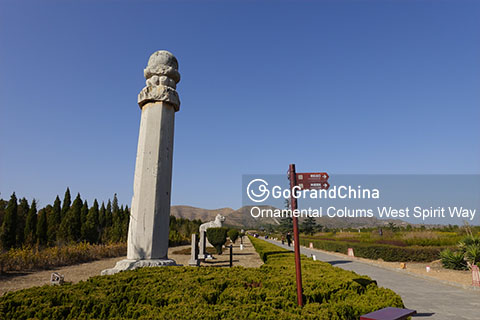
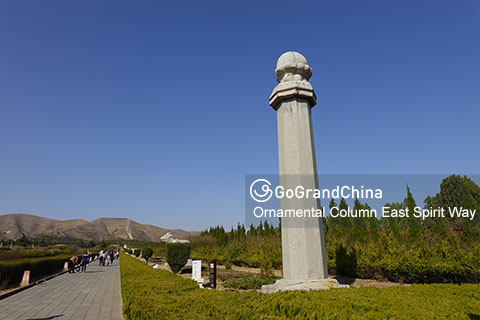
Chinese Unicorns
Qiaoling Mausoleum is the only Tang Dynasty imperial tomb to use a pair of Chinese Unicorns instead of winged horses. The Chinese unicorn is described to have a deer's head, ox's body and horse's hooves. It settled disputes by ramming the party at fault. These two unicorns are 3 meters tall.
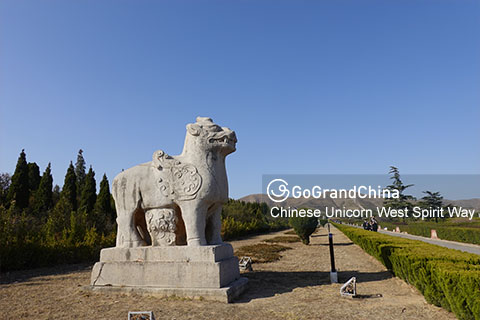
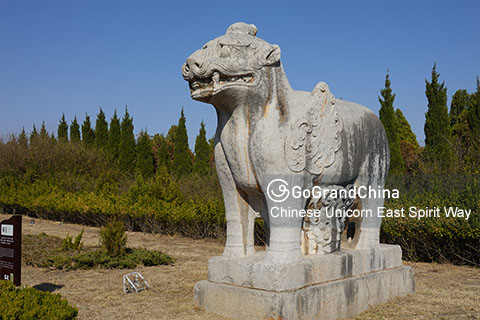
Ostriches
Qianling Tomb of the Tang Dynasty was the first to use ostrich on the Spirit Way. The Khan of the Western Turks presented an ostrich to the Tang court in 620 and the Tushara Kingdom sent another in 650. Ostriches were arranged on the Spirit Way as a symbol of the Tang Dynasty’s power and influence over its foreign neighbors. The two ostriches of Qiaoling Mausoleum were carved on a 2 meter tall stone screen.
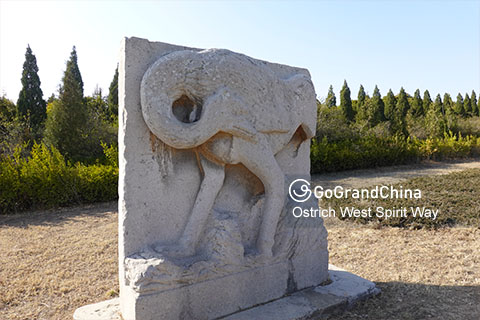
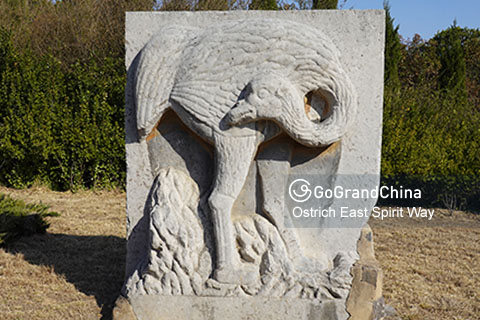
Saddled Horses
Saddled horses were horses of the guard of honor. Five pairs of saddled horses are arranged facing each other long the spirit way. The saddled horses at Qiaoling Mausoleum are 1.7 -2 meters tall and 2.3 to 2.6 meters long. Saddled horses of Qiaoling Mausoleum are the largest and most exquisitely carved horses among all the 18 Tang Dynasty imperial tombs.
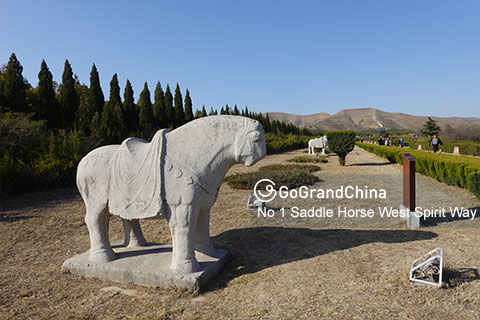
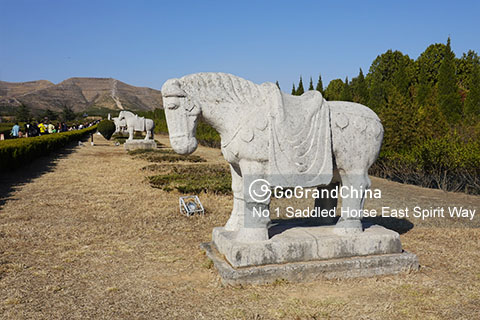
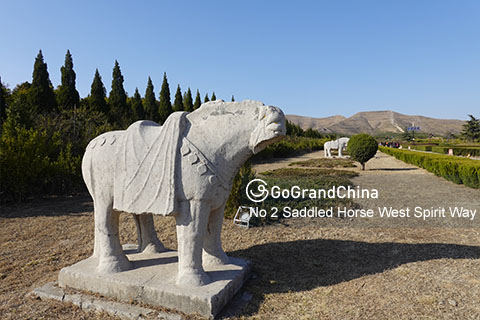
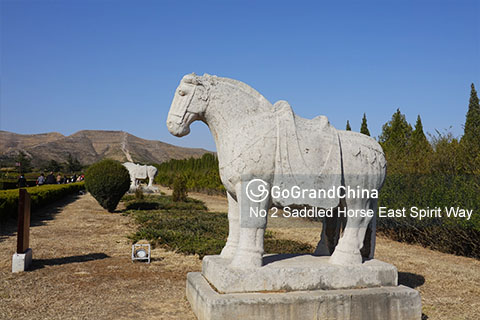
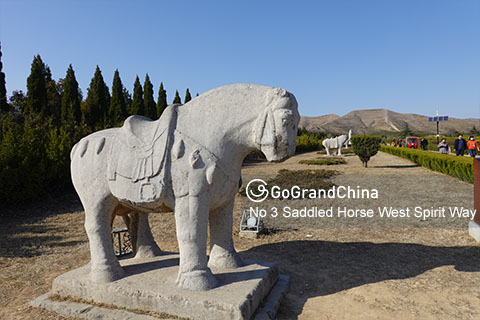
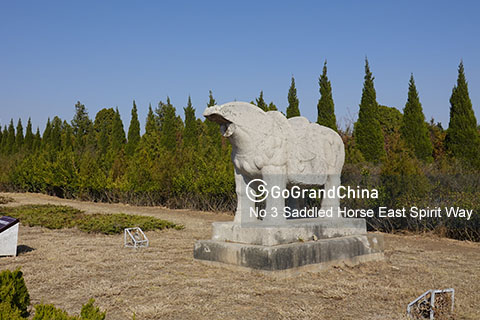
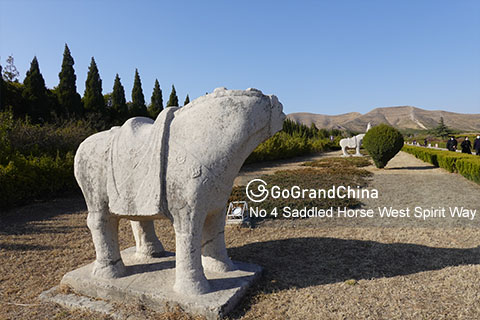
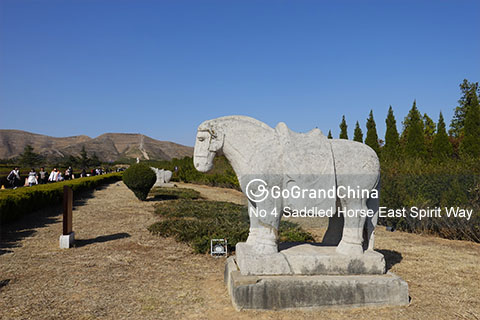
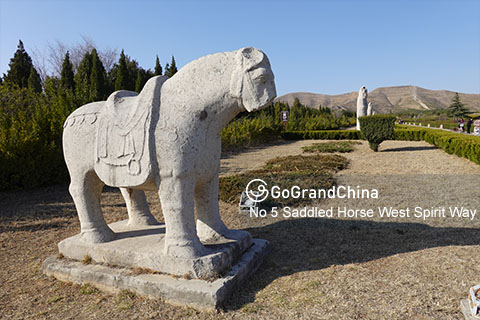
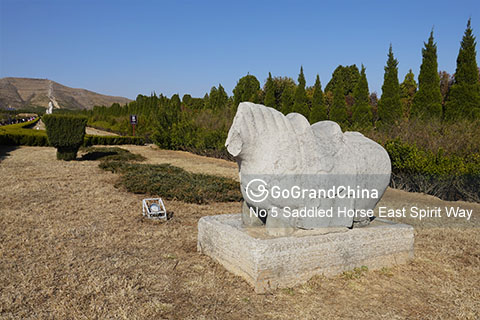
Guardian Statues of Government Officials
The guardian statues of government officials are called Wengzhong in Chinese. Wengzhong was a giant man of great strength and a general of China's first emperor, Emperor Qin Shihuang. He was garrisoned in Lintao, the west end of Great Wall during the Qin Dynasty and had earned merit in the fight against the Huns. After his death, Emperor Qin Shihuang ordered a bronze statue of Wengzhong to be made after him, placed outside his palace and from then on, bronze or stone statues of humans were called Wengzhong. These stone guardian statues symbolize real government officials guarding the tombs. 10 pairs of guardian statues would be arranged along the spirit way. Currently, 16 statues of government officials are still gurading the spirit way. At a height between 3.7 and 4.3 meters, they are the tallest guardian statues among all the 18 Tang dynasty imperial tombs. Wearing Tang Dynasty army general's headgear and heavy long robes; they are standing with sword in hands, and eyes looking straight ahead. They play a major role in creating a majestic atmosphere in front of the tomb.
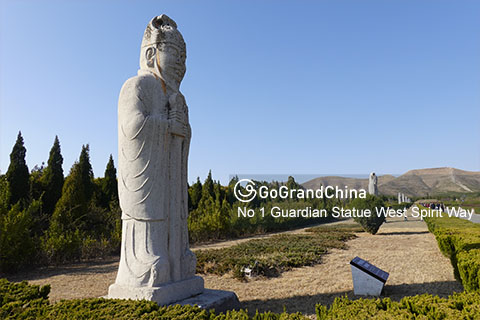
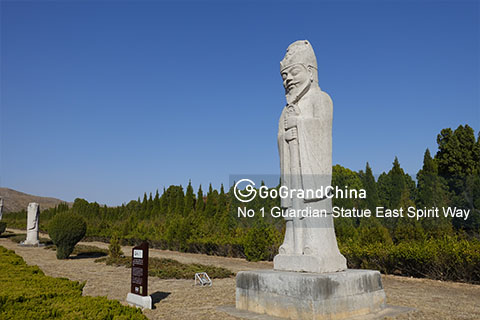
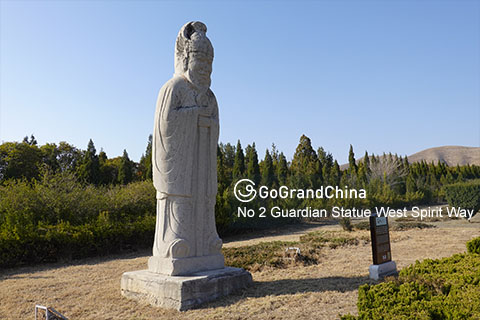
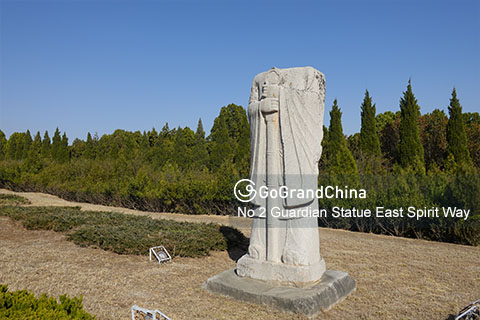
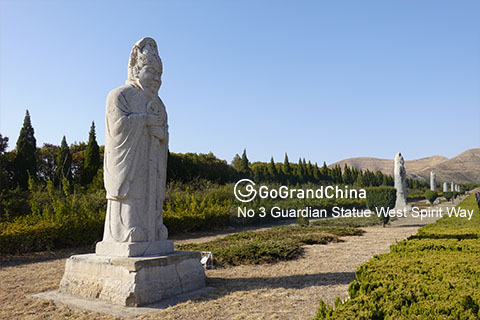
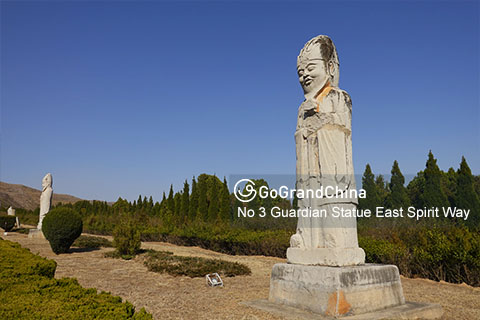
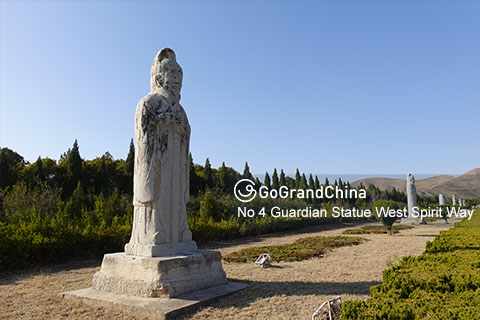
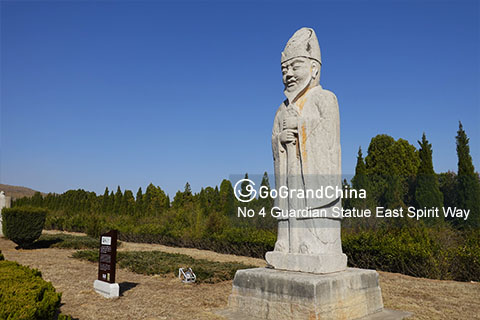
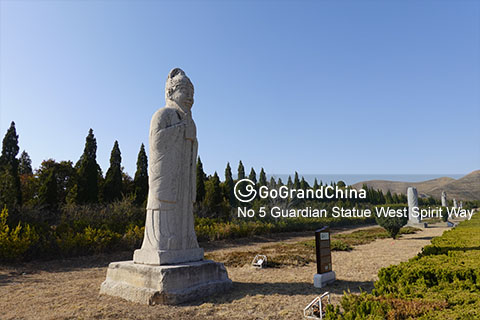
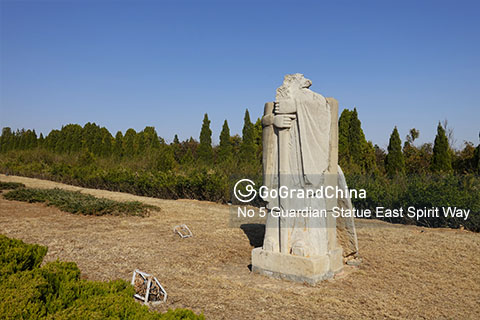


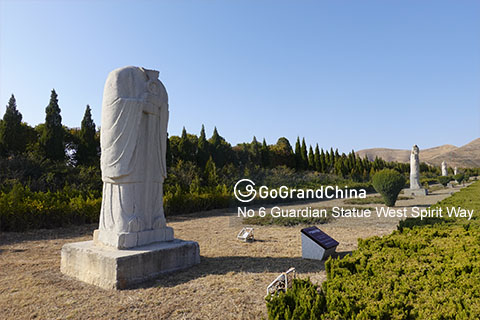

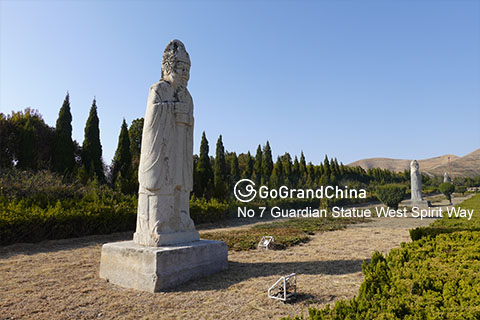
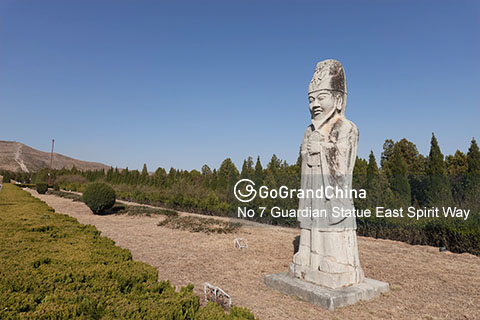
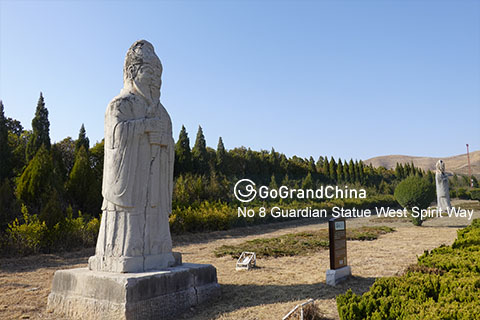
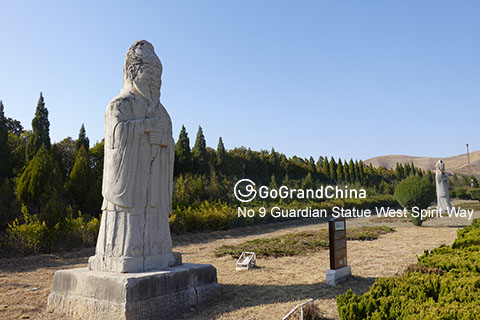
The South Vermilion Bird Gate
The vermilion bird is one of the Four Symbols of the Chinese constellations representing the direction south. It is described as a red bird that resembles a pheasant with a five-colored plumage and is perpetually covered in flames. The south gate of Qiaoling Mausoleum is called the Gate of Vermilion Bird which symbolizes the Gate of Heavenly Succession, the south gate of the Palace City of Chang'an (today's Xian) where Tang Dynasty emperors lived with his family. The vermilion bird gate was connected with a wall to the East Azure Dragon Gate, West White Tiger Gate and North Black Tortoise Gate. The perimeter of this wall is 13 kilometers. Two stone lions are still guarding the ruins of Vermilion Bird Gate Towers.
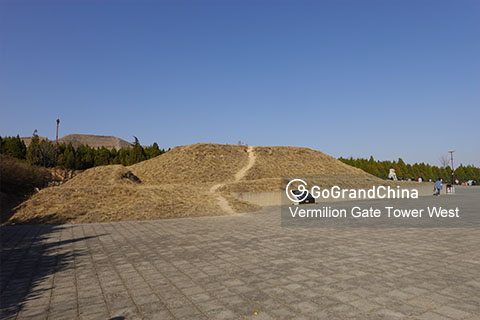
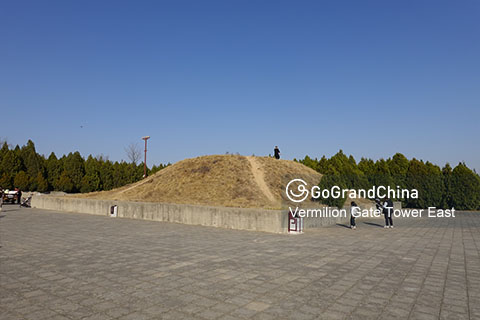
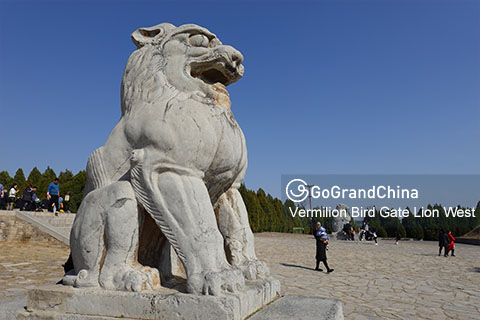
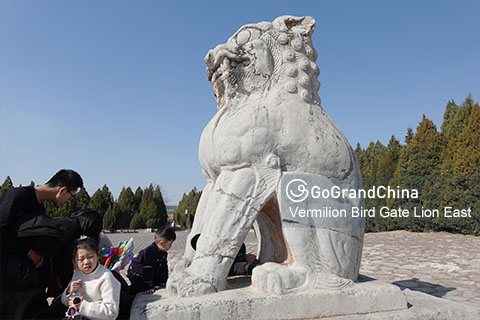
The East Azure Dragon Gate
The azure dragon is one of the Four Symbols of the Chinese constellations representing the direction east. The east gate of Qiaoling Mausoleum is called the Azure Dragon Gate. This gate is connected by a wall with the South Vermilion Bird Gate, West White Tiger Gate and North Black Tortoise Gate. The two stone lions are guarding the ruins of the gate towers. These two lions, one male and one female are looking at each other. They are the only couple looking at each other among all the 18 Tang Dynasty imperial tombs.
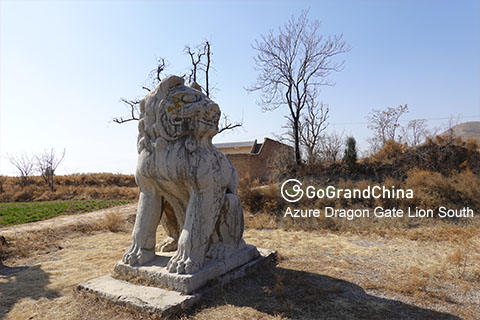
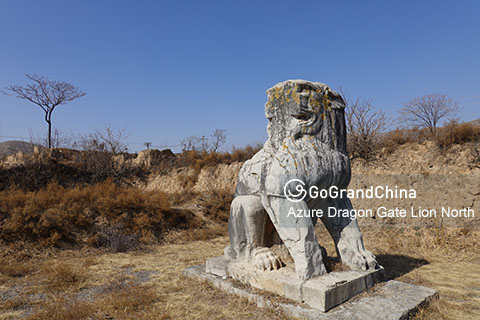
The West White Tiger Gate
The white tiger is one of the Four Symbols of the Chinese constellations representing the direction west. Two stone lions are still guarding the ruins of White Tiger Gate Towers. Both the male and female lions are 2.8 meters tall. The female lion is rolling its tongue.
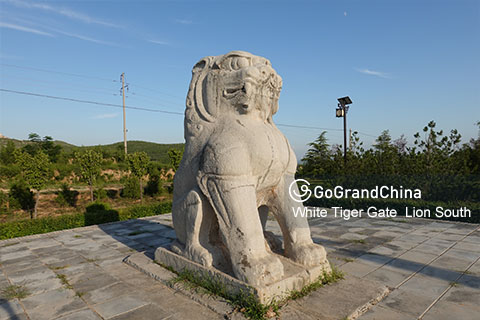
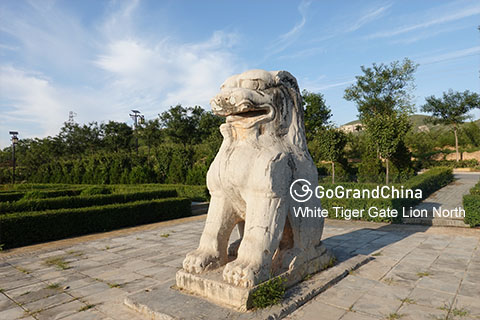
The North Black Tortoise Gate
The black tortoise is one of the Four Symbols of the Chinese constellations representing the direction north. It is usually depicted as a turtle entwined together with a snake. A miniature spirit way is built outside the Black Tortoise Gate in correspondence with the grand spirit way located outside the Vermilion Gate. Two crouching lions are still guarding the ruins of Black Tortoise Gate Towers. Three pairs of saddled horses are arranged outside the black tortoise gate.
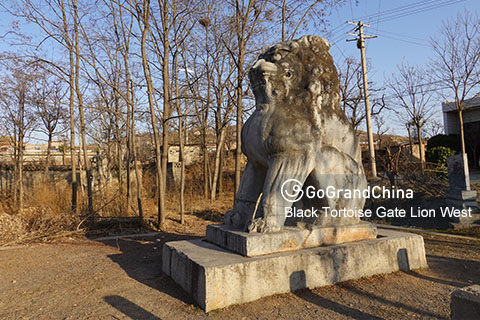
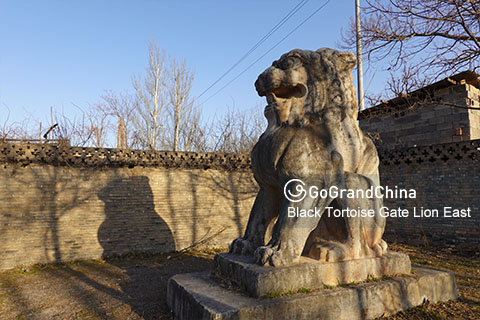
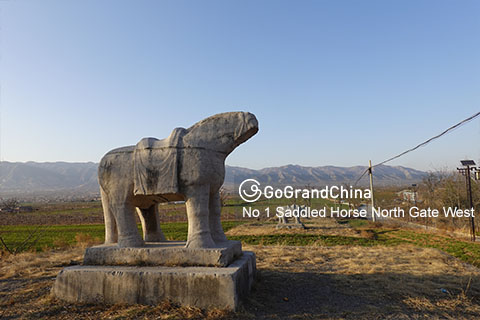
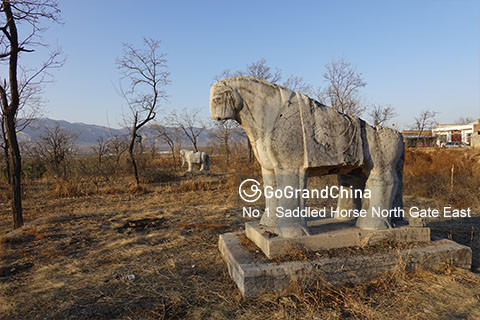
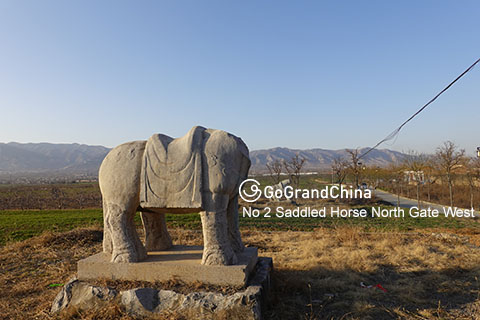
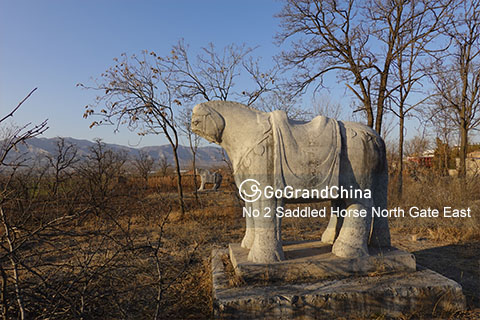
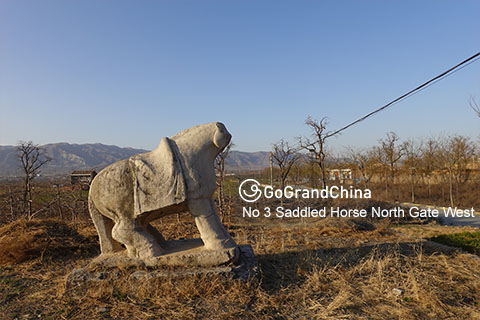
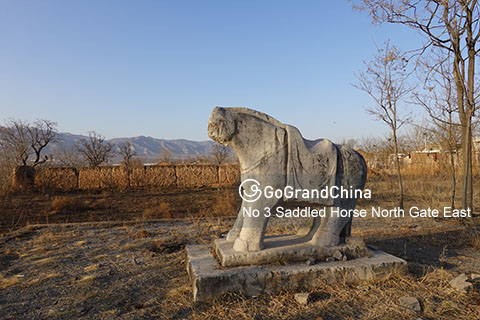
How to get to Qiaoling Mausoleum of Tang Dynasty
• Qiaoling Mausoleum is located 120 km away from downtown Xian.
• Rent a car/bus from GGC to enjoy a hassle free private transfer from hotels in Xian to Qiaoling Mausoleum.
Additional travel advice on Qiaoling Mausoleum of Tang Dynasty
• Please wear comfortable hiking shoes if you want to hike up the 761 meter elevated Mount Fengshan where the tomb chamber is located.
• UV is very strong in summer, please wear sunscreen, hat and sunglasses to prevent sunburns.
There are no products matching the selection.

